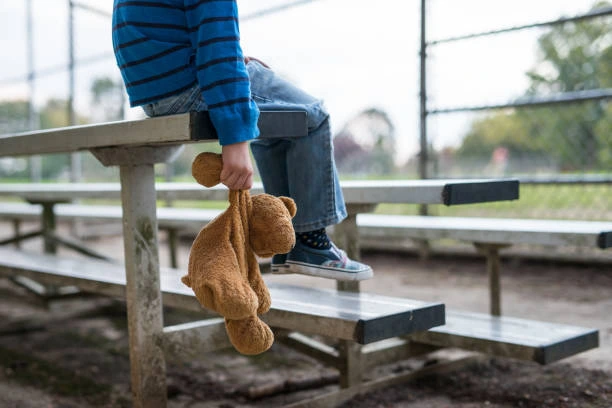Foster Care Abuse: 7 Killer Ways To Prevent Abuse

Foster care abuse is one of the troubling issues we face in our world today. So many efforts have been made to create a safe environment for those vulnerable children, yet many foster systems keep falling short, despite the ongoing steps to provide a safe environment for the foster care children.
While foster care is intended to provide stability and protection, for many children, it has unfortunately become a source of trauma. Recent studies conducted by adoption experts have shown that almost 30% of children in foster care systems are experiencing some forms of abuse, which range from emotional neglect and physical violence to sexual abuse, etc.
We will discuss these in detail. However, more current foster Care abuse statistics show that over 70,000 cases have been filled only this year in the U.S.
The incessant increase in abuse is a clear indication that proper care should be given to those children in foster care, both locally and internationally. The first step to addressing this abuse is to recognize the gravity before setting out to create a safe environment for every child in foster care.
In this post, we will delve into ways to Curb these Foster Care Abuses. Let’s look at what foster abuses look like.
What Are The Four Types Of Abuse In Care?
There are so many forms of foster care abuse, but these four are the most common of them all.
Physical abuse:
This form of abuse is the most common form of abuse recorded so far in foster care. It involves the clear use of force on a child that results in bodily pains or impairments. This includes intentional actions like hitting or trying to correct or stop someone wrongly. According to WHO ( World Health Organization), about 1 in 6 elderly people in foster care experience most of these forms of abuse
This physical abuse can result in many consequences, like bruises, broken bones, or even death. Did you see why imminent actions should be taken to stop the foster care abuse?
Emotional Abuse:
Emotional abuse involves both verbal and nonverbal actions taken on someone who causes them either emotional pain or distress. This includes threats, intimidation, humiliation, or isolation. This form of foster care abuse is usually hard to notice since you will not see any scars on the victim’s body, yet the National Council on Aging said that 7% of adults reported having this abuse.
Physical abuse can lead to depression, anxiety, and loss of self-worth. According to Dr. Laura Mosqueda, a geriatrician, “emotional abuse is insidious and can be as damaging as physical abuse, if not more.”
3. Sexual Abuse:
Sexual abuse in care involves any non-consensual sexual contact or behavior, including unwanted touching, sexual assault, or exploitation. Vulnerable populations, such as those with cognitive impairments, are particularly at risk. The National Institutes of Health (NIH) estimates that 6–10% of elderly individuals in care may experience sexual abuse.
This form of abuse often goes underreported due to shame or the victim’s inability to communicate. Elder abuse expert, Dr. Bonnie Brandl, notes, “Sexual abuse in older adults is rarely discussed, but it is a real and devastating issue.”
4. Neglect:
Neglect occurs when caregivers fail to meet the basic needs of those in their care, such as food, hygiene, medical care, and protection. According to the National Adult Protective Services Association, neglect is the most common form of elder abuse, affecting 60% of all reported abuse cases.
Neglect can lead to malnutrition, bedsores, infections, and even death. As elder care expert Dr. Richard Schulz explains, “Neglect is a silent form of abuse, often hidden behind unintentional acts of omission but with devastating consequences for the elderly.”
Why Is There So Much Abuse In Foster Care?

The reason why there are many reports of abuse in foster care is that the system has already faced many challenges, like a lack of adequate resources and the overwhelming number of children in the care system.
There is also the problem of understaffing and underfunding from the foster care agencies, which makes monitoring and vetting of the system impossible. As a result of that, children may be placed with an unprepared foster parent, which may subject the child to abuse or neglect.
Again, foster care parents who have good intentions for fostering a child may face some serious trauma from the child’s behavior, and with proper training and support, it may lead to an unfavorable environment for the children.
Additionally, due to the fear of leaving the child in overcrowded groups, the agency may be forced to place a child without proper investigation. That usually results in foster care abuse. Another thing that causes foster care abuse is the demand for foster families.
To tackle these issues, there should be comprehensive training for foster care parents and good oversight. There should also be mental health resources for both the foster parents and children.
How To Prevent Foster Care Abuse.
There is a need to stop or prevent abuse in our foster care homes for the safety of our children. I have listed seven steps to help you do that in this post. Here they are.
1. Regular home visits and monitoring:
The increase in foster care abuse cases could be because the foster families are not checked regularly. To win the war on child abuse in foster care, social workers and child welfare should conduct regular checks.
Having the social worker visit the foster care family unannounced is another great way to prevent foster care abuse. By doing this often, it will be determined how comfortable the child is in foster care. Through this also, the social worker will know if the foster parents are following the rules and guidelines of the foster care.
Regular check-ins will also foster accountability among foster parents, as they know their caregiving practices are consistently being evaluated.
2. Strengthening the Child Welfare System:
A perfect child welfare system will also help to checkmate abuse in our foster care systems. To achieve this, the caseworkers should be trained effectively and their workload reduced drastically, so they have time to recognize the warning signs of abuse.
An overburdened child welfare system may not be keen on checking or seeing any red flags of abuse in the system won’t have, which leaves children vulnerable to abuse. By reducing their task load and providing more funds and resources to child protection agencies, authorities can ensure timely interventions and better oversight of foster homes.
3. Thorough screening of the prospective foster parents:
If we want to prevent abuses in our foster home, then we don’t have to leave anything unturned during the home study. Agencies must be ready to conduct a thorough investigation on any intending foster parent. Extensive checks must be done on the background; financial and criminal records must be done extensively to ensure the prospective parent doesn’t have any bad history.
They should also assess the emotional and mental stability of candidates. All these comprehensive checks will make it easier to know which parent has temperament issues or is not eligible to foster a child.
4. Ongoing Foster Parent: Training and Education:
Ongoing foster parent training is key to preventing abuse. Training programs should be introduced to help intending foster care parents understand what fostering a child is all about. Most times the foster parents don’t know their left or right about fostering a child, however, so these training programs will help them a lot. The sessions should cover child development, how to handle behavioral issues and others, etc.
These training programs will equip foster parents with all the tools they need to handle the stress, frustration, and emotional challenges that can arise from caring for traumatized children. Another importance of this training is that having it regularly will allow parents to learn new things that help them be abreast of the changing times, thereby reducing the likelihood of abusive situations.
5. Strengthening the Child Welfare System:
A perfect child welfare system plays a significant role in preventing foster care abuse. To achieve this, the caseworkers should be trained effectively and their workload reduced drastically, so they have time to recognize the warning signs of abuse.
An overburdened child welfare system won’t have time to check or see red flags, which leaves children vulnerable to abuse. By providing more funding and resources to child protection agencies, authorities can ensure timely interventions and better oversight of foster homes.
6. By Providing Both Emotional And Health Support For Foster Children:
Most children in foster care are suffering from trauma from their past experiences. These experiences usually make them more prone to abuse if not supported. To help them out of that, you have to provide counseling and mental health services to them.
Providing these services will help the children feel secure and open to telling about their troubles, thereby creating a prompt response to the abuse. Additionally, mental health professionals can recognize signs of abuse and take the necessary steps to protect the child.
7. Encourage Open Communication Between the Children and the Caseworker:
Communication remains the first solution to any problem, including reducing foster care abuse. By encouraging open communication, it will be easier for the child to trust you and express their feelings and fears to you.
Caseworkers should create a safe and trusting environment where children feel comfortable discussing their experiences. Giving the children the opportunity to express their fears and discomfort without fear can help when abuse is suspected.
Regular check-ins and one-on-one sessions also allow caseworkers to build rapport and detect subtle signs of mistreatment.
8. Promoting Foster Parent Accountability and Support Networks:
Another good way to combat abuse of people in foster care is to make it easy for foster parents to access a strong support network and accountability measures. This will help to prevent burnout and decrease or remove abusive behavior entirely from the system.
Foster care agencies should do whatever is necessary to promote support groups so it will be easier for foster parents to share their experiences and get advice or emotional support from other parents of like mind.
Another thing is to hold the foster parents accountable through mentorship programs or peer review. This will help to easily identify potential issues and correct them early.
Final thoughts:
Foster care abuse has been the most troubling issue worldwide, and all the efforts to safeguard vulnerable children have failed. To address these bordering issues, we will need a variety of approaches, including our children’s welfare system, to ensure that prospective parents are thoroughly investigated and offered ongoing support and training too.
It’s also crucial to provide emotional and mental health support to the children and promote accountability and open communication, as they will also help.
By working with these steps I have provided here, you are taking a good step toward creating a safer and more nurturing environment for the children in foster homes.




